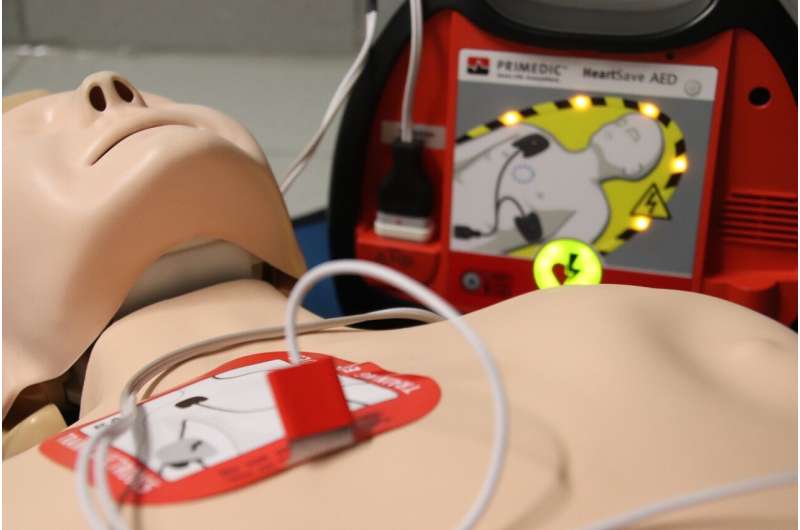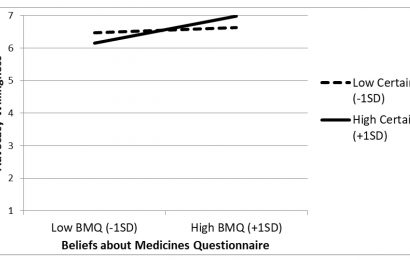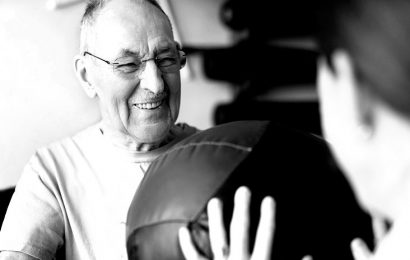
Basic life support training in schools and communities is essential to improve survival from cardiac arrest, according to European Society of Cardiology (ESC) Guidelines published online today in the European Heart Journal. The Guidelines for the management of patients with ventricular arrhythmias and the prevention of sudden cardiac death call for more automated external defibrillators (AEDs) in public places such as shopping malls, stadiums and train stations.
Up to 6 million people globally suffer from sudden cardiac arrest each year, of whom less than 10% survive. Research on how to predict and prevent cardiac arrest is ongoing, but immediate gains in survival will come from the general public. “The public is our major ally in the battle against sudden cardiac death in communities,” said guidelines task force chairperson Professor Jacob Tfelt-Hansen of Copenhagen University Hospital, Denmark. “Everyone, including schoolchildren, should learn how to do cardiopulmonary resuscitation (CPR) and use an AED. Both of these actions can save lives.”
“Going one step further, emergency services should consider adopting mobile phone systems to locate and activate volunteers near to victims, allowing early resuscitation attempts before the arrival of paramedics,” said guidelines task force chairperson Professor Katja Zeppenfeld of Leiden University Medical Center, the Netherlands.
In the Western world, 75–80% of sudden cardiac deaths are caused by coronary artery disease. Risk can be reduced by adopting heart healthy habits such as not smoking, consuming a nutritious diet, losing excess weight, exercising and reducing stress—all of which help to avoid plaque build-up and clot formation in the coronary arteries.
For heart attack patients, revascularization to open the blocked coronary artery reduces the risk of ventricular arrhythmias and sudden cardiac death. It also helps to preserve cardiac function by restoring normal circulation to the heart muscle. After revascularization, which can be achieved with percutaneous interventions or bypass surgery, the most important factor associated with the occurrence of sudden cardiac death is the remaining function in the left ventricle. Professor Tfelt-Hansen said, “Patients with a myocardial infarction or chronic coronary artery disease who have severely reduced left ventricular function and symptoms of heart failure despite revascularization and medication are at risk of sudden cardiac death and an implantable cardioverter defibrillator is indicated.”
Sudden cardiac death can also be caused by electrical disorders of the heart. Patients with diagnosed conditions that increase the likelihood of sudden cardiac arrest must avoid the specific triggers related to their disease. For example, those with a rare electrical disorder called catecholaminergic polymorphic ventricular tachycardia (CPVT) should steer clear of competitive and strenuous exercise and stressful environments. Disease- and patient-specific lifestyle adjustments should be discussed with the treating cardiologist.
In athletes, the incidence of sudden cardiac death increases with age, from 0.4–3 per 100,000 participant-years in those aged 35 years and under to 2–6.3 per 100,000 participant-years in those over 35 years. On average, one in every 14 sudden cardiac deaths in athletes occurs in women. Pre-participation cardiovascular evaluation of competitive sportspeople should be considered, the aim being to identify undiagnosed conditions so that cardiac arrest can be prevented. In middle-aged and senior athletes, the most common cause of sudden cardiac death is coronary artery disease and a risk evaluation is advised before taking up vigorous exercise. Professor Zeppenfeld said, “Excellent rates of survival with favorable neurological outcome after cardiac arrest have been reported in sports centers equipped with AEDs. The guidelines recommend that staff at sports venues are trained in CPR and in the use of AEDs.”
Advice is provided on the evaluation of sudden cardiac death victims and relatives. An inherited cardiac disease is found in 25–70% of victims under 50 years of age and the family left behind is often at risk. A comprehensive autopsy is recommended, ideally in all cases of sudden death but especially in those under 50 years, to establish the likely cause and the potential role of a genetic condition. Relatives should be examined in a specialized clinic when an inherited cardiac disease is suspected.
Source: Read Full Article


